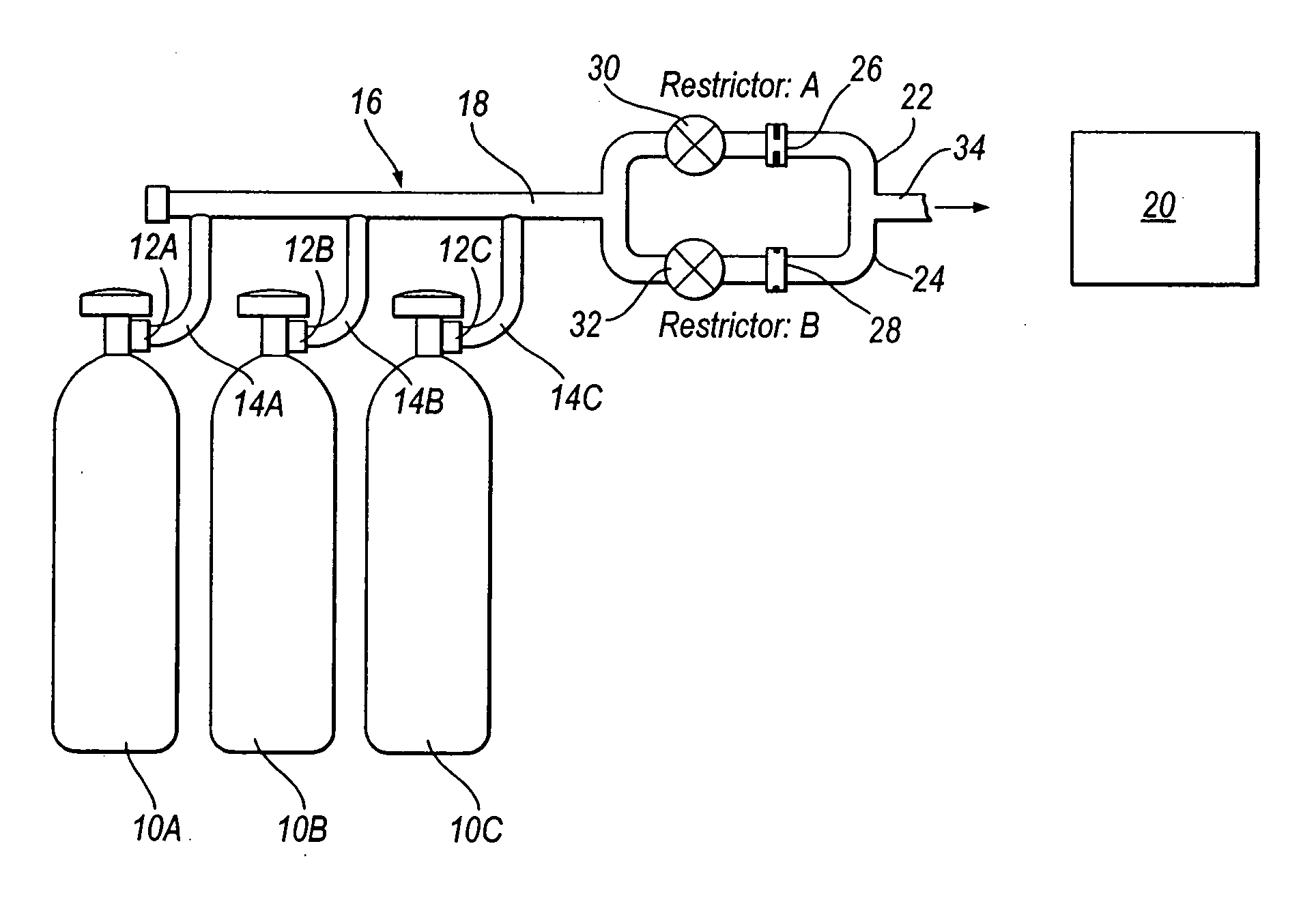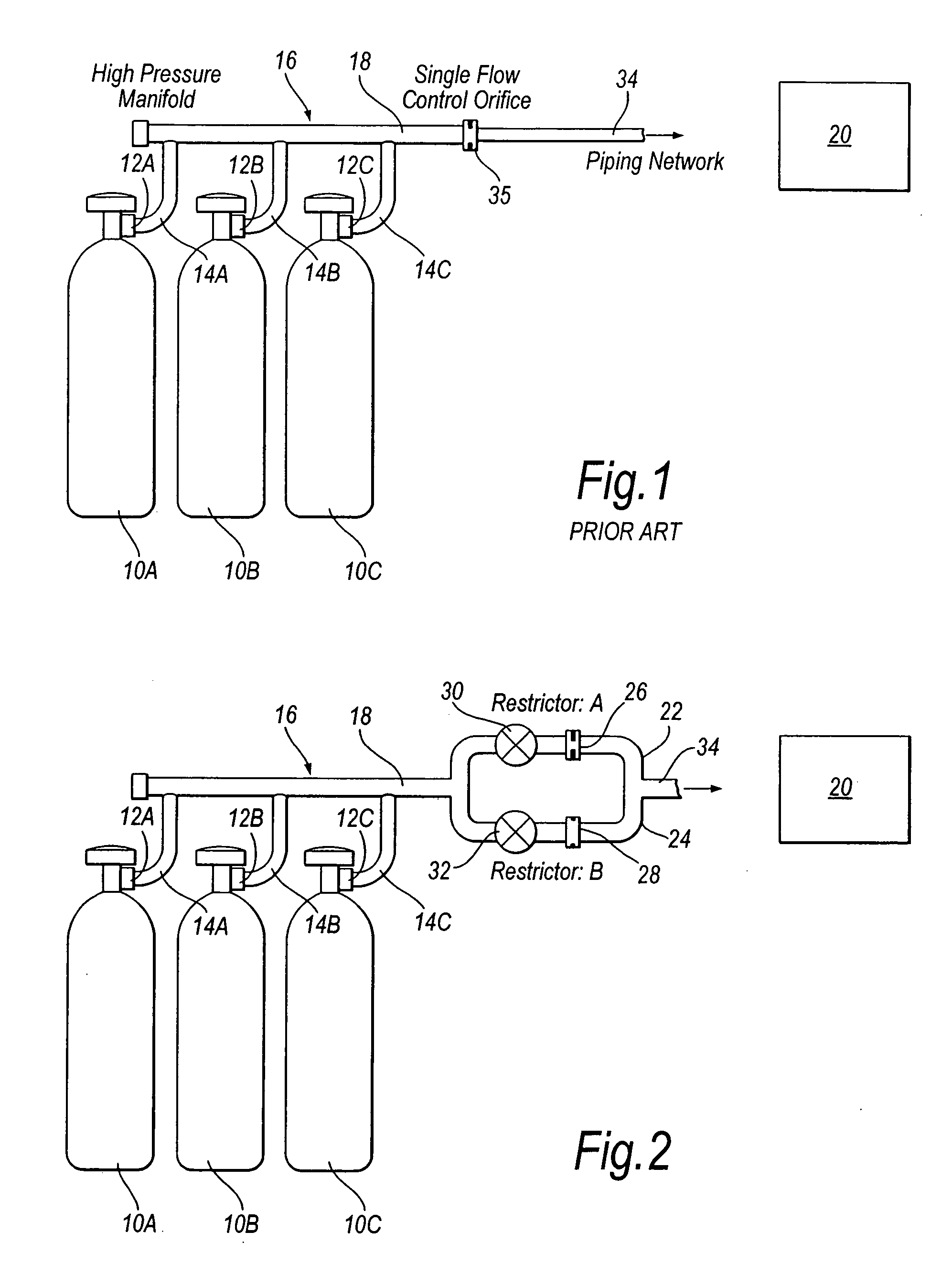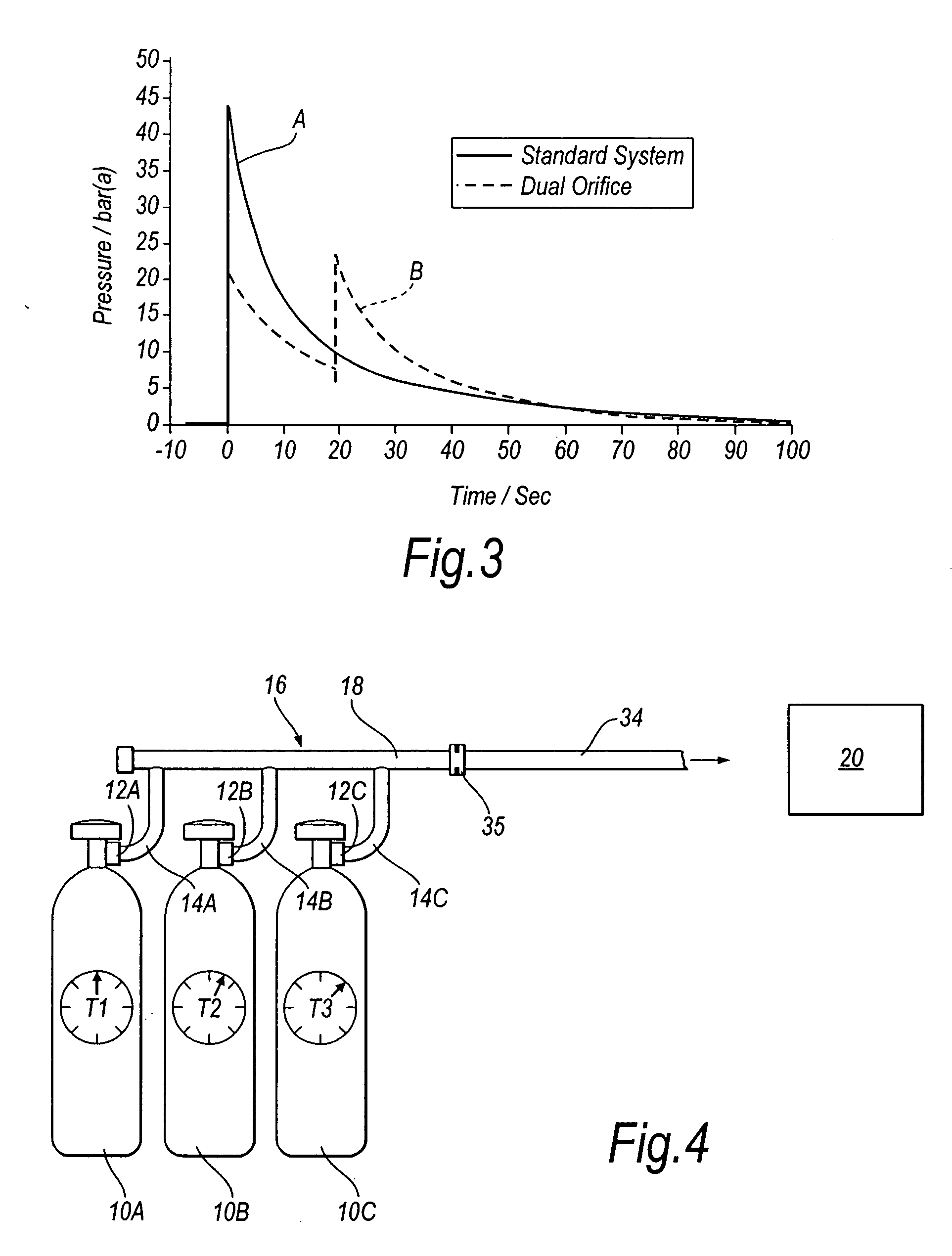Fire suppression system
a fire suppression system and fire suppression technology, applied in boring tools, medical science, dentistry, etc., can solve the problems of high cost of heavy duty piping and damage to the environment, and achieve the effect of reducing pressur
- Summary
- Abstract
- Description
- Claims
- Application Information
AI Technical Summary
Benefits of technology
Problems solved by technology
Method used
Image
Examples
first embodiment
[0026]FIG. 2 shows the invention. Three containers 10A,10B,10C each contain inert gas stored at very high pressure. In the embodiment only three containers are shown, although it should be appreciated that many more containers may be employed, the number of containers being selected according to the application. In the embodiment, each of the containers contains a blend of 50% argon and 50% nitrogen, and may comprise Argonite (RTM) fire suppressant available from Kidde. The fire suppressant may be stored in the containers at a pressure of between 200 and 300 bar(g). The type and proportion of inert gases within the containers, and the pressure at which the inert gas is stored in the containers, will be determined in accordance with the application of the fire suppression system.
[0027] Each of the containers 10A, 10B and 10C is provided with a check valve 12A,12B,12C which, when opened, enables discharge of the inert gas from each of the containers into respective inlet pipes 14A,14B...
second embodiment
[0041] The check valve 12A of container 10A is opened to initiate fire suppression (T=0), with the check valves 12B and 12C remaining closed. This results in the first peak shown in the graph of FIG. 5. After a delay of 3.95 seconds (T=3.95 s) the check valve 12B is opened (with the check valve 12A remaining open and the check valve 12C being closed). This results in the second peak shown in the graph of FIG. 5. After a time delay of 17.1 seconds (T=17.1 s) from fire suppression initiation, the check valve 12C of the third container 10C is opened (with the check valves 12A and 12B also remaining open). This results in the third peak shown in the graph of FIG. 5. The peak nozzle pressure in the system of the second embodiment shown in FIG. 4 is 12.6 bar (g), which is a 40% reduction compared to the known system of FIG. 1.
[0042] Although in the FIG. 4 embodiment only three containers 10A,10B,10C are shown, it should be understood that more or fewer containers might be employed, depend...
third embodiment
[0045] In a third embodiment, shown in FIG. 6, the inert gas suppression system of FIG. 1 is modified so that the inlet pipe 14A,14B,14C of each container 10A,10B,10C is provided with a respective restrictor 40A,40B,40C. The restrictors 40A,40B,40C may be provided downstream of the check valve 12A,12B,12C at each container.
[0046] The size of each restrictor 40A,40B,40C may be determined by calculating an area equal to one third of that of the restrictor used for the three cylinder known standard system (i.e. the 12 millimeter restrictor used in the system shown in FIG. 1 equated to three 6.93 millimeter individual restrictors in the FIG. 6 embodiment, with a 7 millimeter restrictor being sufficient). The same logic can be applied to a two cylinder system with a 10 millimeter restrictor, with the individual restrictors having a diameter of 7.07 millimeters (with 7 millimeters being sufficient). The same restrictor size can be used for each of the cylinders 10A,10B,10C of a fire suppr...
PUM
 Login to View More
Login to View More Abstract
Description
Claims
Application Information
 Login to View More
Login to View More - R&D
- Intellectual Property
- Life Sciences
- Materials
- Tech Scout
- Unparalleled Data Quality
- Higher Quality Content
- 60% Fewer Hallucinations
Browse by: Latest US Patents, China's latest patents, Technical Efficacy Thesaurus, Application Domain, Technology Topic, Popular Technical Reports.
© 2025 PatSnap. All rights reserved.Legal|Privacy policy|Modern Slavery Act Transparency Statement|Sitemap|About US| Contact US: help@patsnap.com



